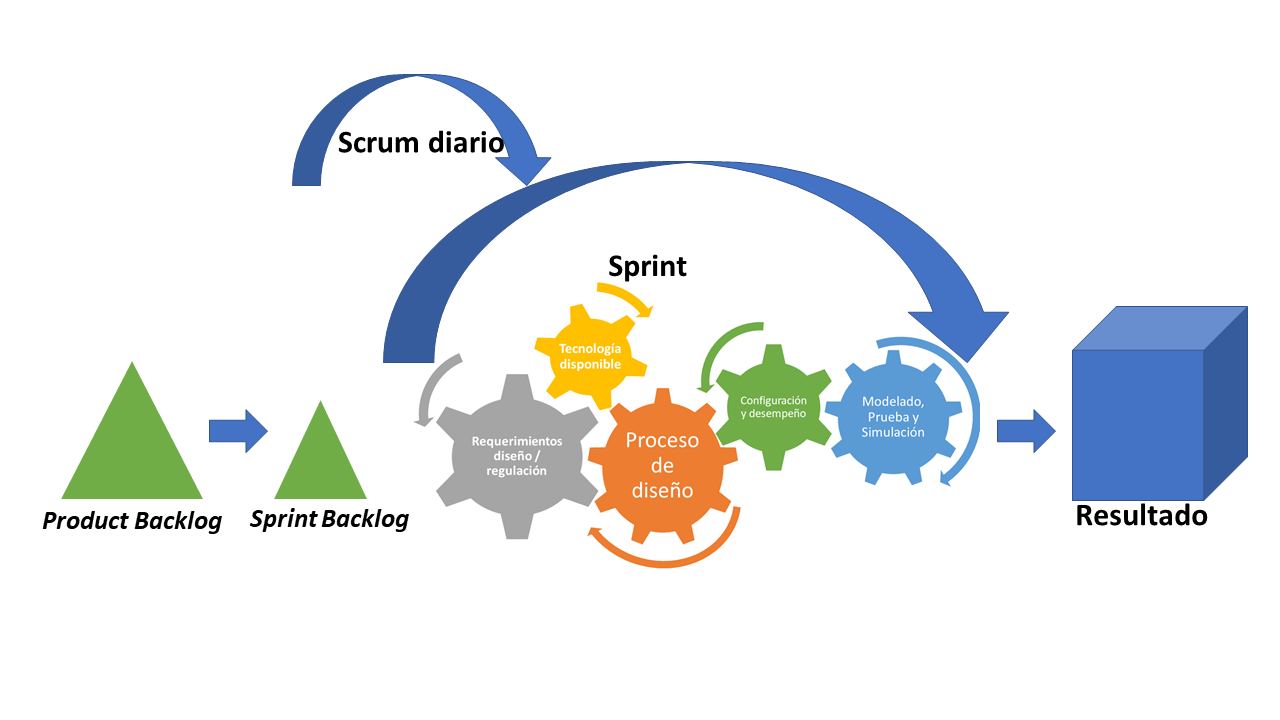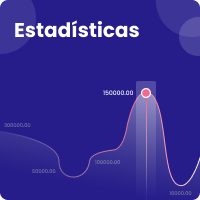Propuesta para la aplicación de métodos ágiles en el diseño conceptual de un dron
DOI:
https://doi.org/10.18667/cienciaypoderaereo.671Palabras clave:
desarrollo de producto, diseño conceptual, dron, planificación de diseño, ScrumResumen
Cuando se desarrolla un nuevo producto aeroespacial, es esencial evaluar su rendimiento. Los drones se consideran un producto noble con un enorme potencial de impacto en la industria de la aviación en los próximos años. El diseño de un dron certificado es una actividad compleja en la que interactúan varias áreas del conocimiento. Normalmente se plantea en fases que abarcan desde la viabilidad hasta la producción. En este artículo se propone el uso de metodologías ágiles para el diseño conceptual de un dron. Diversos estudios han demostrado el potencial para abordar desafíos similares mediante el uso de métodos análogos a aquellos que fueron empleados en el desarrollo de software (como las metodologías ágiles). El Scrum fue el método ágil seleccionado para su adaptación al diseño del dron con el fin de gestionar mejor la complejidad del proceso de diseño (incluyendo las alteraciones de este). Finalmente, se presenta una propuesta para la aplicación de este método mostrando las diferentes etapas diseño y sus beneficios potenciales.
Descargas
Referencias
Aftab, S., Nawaz, Z., Anwar, M., Anwer, F., Bashir, M., & Ahmad, M. (2018). Comparative Analysis of fdd and sfdd. International Journal of Computer Science and Network Security, 18(1), 63-70. http://paper.ijcsns.org/07_book/201801/20180108.pdf
Albeaino, G., Masoud, G., & Franz, B. (2019). A systematic rewiev of unmmaned aerial vehicle application areas and
thecnologies in the aec domain. Journal of information technology in construction, 24. https://itcon.org/papers/2019_20-ITcon-Albeaino.pdf
Anderson, J. D. (1999). Aircraft Performance and Design. wcb/McGraw–Hill.
Anwer, F., Aftab, S., Waheed, U., & Muhammad, S. (2017). Agile Software Development Models tdd, fdd, dsdm, and
Crystal Methods: A Survey. International Journal of Multidisciplinary Sciences and Engineering, 8(2), 1-10. https://www.researchgate.net/publication/316273992_Agile_Software_Development_Models_TDD_FDD_DSDM_and_Crystal_Methods_A_Survey
Baguley, P. (2018). Agile development and Cost of uav.
Benassi, J. L., Amaral, D. C., & Ferreira, L. (2016). Towards a conceptual framework. Journal of Operations & Production Management, 36(2), 200-219. https://doi.org/10.1108/IJOPM-11-2013-0511
Blooshi, M. A., Jafer, S., & Patel, K. (2018). Review of Formal Agile Methods as Cost-Effective Airworthiness Certification Processes. Journal of Aerospace Information Systems, 15(7), 1-14. https://doi.org/10.2514/1.I010601
Borda, J., Trabasso, L., & Pessoa, M. (2019). Agile Management in Product Development. Research-Technology Management, 62(5), 63-67. https://doi.org/10.1080/08956308.2019.1638488
Ciric, D., Bojan, L., Gracanin, D., Palcic, I., & Zivlak, N. (2018). Agile Project Management in New Product Development and Innovation Processes: Challenges and Benefits Beyond Software Domain. Conference: 2018 IEEE International Symposium on Innovation and Entrepreneurship(tems-isie), 1-19. https://doi.org/10.1109/TEMS-ISIE.2018.8478461
Conforto, E., Salum, F., Amaral, D., Silva, S., & Almeida, L. (2014). Can Agile Project Management Be Adopted by
Industries Other than Software Development? Project Management Journal, 45(3), 21-34. https://doi.org/10.1002/pmj.21410
Darrin, M., & Devereux, W. (2017). The Agile Manifesto, design thinking and systems engineering. Annual IEEE International Systems Conference (SysCon), 1-5. https://doi.org/10.1109/SYSCON.2017.7934765
Della Vecchia, P., De Marco, A., Stingo, L., & Nardone, G. (2016). The Agile Method Applied to Aircraft Design at Univeristy of Naple. 6th easn International Conference On Innovation in European Aeronautics Research.
Dickison, T., & McIntyre, R. M. (1997). A conceptual framework of teamwork measurement. En Brannick, M, Salas, T., Team Performance Assessment and Measurement: Theory, Methods, and Applications (pp. 19-43). Psychology Press.
Esposito, E., & Raffa, L. (2004). Evolution of the supply chain. 15th International Annual ipsera.
Fowler, M., & Highsmith, J. (2001). The agile manifesto. Software Development.
Ghimire, D., Charters, S., & Gibbs, S. (2020). Scaling Agile Software Development Approach in Government Organization in New Zealand. icsim ‘20: Proceedings of the 3rd International Conference on Software Engineering and Information Management, 100-104. https://doi.org/10.1145/3378936.3378945
Glas, M., & Seitz, A. (2012). Application of Agile Methods in Conceptual Aircraft Design. Deutsche Gesellschaft für Luftund Raumfahrt-Lilienthal-Oberth eV. https://www.dglr.de/publikationen/2012/281384.pdf
Glas, M., & Ziemer, S. (2009). Challenges for Agile Development of Large Systems in the Aviation Industry. Proceedings of the 24th acm sigplan Conference companion on Object oriented programing systems languages and aplications, 901-908.
Hassanalian, M., & Abdelkefi, A. (2017). Classifications, Applications, and Design Challenges of Drones: A Review.
Progress in Aerospace Sciences, 91, 99-131. https://doi.org/10.1016/j.paerosci.2017.04.003
Hodgkinson, D., & Johnston, R. (2018). Aviation Law and Drones: Unmanned Aircraft and the Future of Aviation. Routledge.
Huikkola, T., & Kohtamäki, M. (2020). Agile new solution development in manufacturing companies. Technology Innovation Management Review, 10(3), 16-23. https://timreview.ca/article/1333
Ivanis, D. (2009). Where Lean and Technology Meet. Boeing.com. https://www.boeing.com/news/frontiers/archive/2009/.../i_ca01.pdf
Kazenbach, J. R., & Smith, D. K. (1993). The discipline of teams. Harvard Business Review, 83(7), 111-120.
Koch, S. (2004). Agile principles and open source software development: A theoretical and empirical discussion. Lecture notes in computer science, 85-93.
Komarov, V. A., Borgest, N. M., Vislov, I. P., Vlasov, N. V., Kozlov, D. M., Korolkov, O. N., & Maynskov, V. N. (2011). Conceptual Aircraft Design. Samara State Aerospace University.
Krupa, G. P. (2019). Application of Agile Model-Based Systems Engineering in aircraft conceptual design. Aeronautical Journal, 123(1268), 1561-1601. https://doi.org/10.1017/aer.2019.53
Kupiainen, E., Mäntylä, M., & Itkonen, J. (2015). Using metrics in Agile and Lean Software Development–A systematic
literature review of industrial studies. Information and Software Technology, 62, 143 -163. https://doi.org/10.1016/j.infsof.2015.02.005
Lavallée, C. (2019). The eu Policy for Civil Drones: The Challenge of Governing Emerging Technologies. Institute for European Studies Policy Brief. https://core.ac.uk/download/pdf/200760322.pdf
Lee, J., Tan, H., Crandall, D., & Šabanović, S. (2018). Forecasting Hand Gestures for Human-Drone Interaction. hri’18: Companion of the 2018 acm/ieee International Conference on Human-Robot Interaction, 167-168. https://doi.org/10.1145/3173386.3176967
Luppicini, R., & So, A. (2016). A Technoethical Review of Commercial Drone Use in the Context of Governance, Ethics, and Privacy. Technology in Society, 46, 109-119. https://doi.org/10.1016/j.techsoc.2016.03.003
McDermott , C., & O’Connor, G. (2003). Managing radical innovation: an overview of emergent strategy issues. Journal of Product Innovation Management, 19(6), 424-438. https://doi.org/10.1111/1540-5885.1960424
Mulder, F., Verlinden, J., & Maruyama, T. (2014). Adapting Scrum Development Method for Development of Cyber-
Phisical Systems. Proceedings of tmce 2014, 19-23. https://www.researchgate.net/publication/262419522
Nawaz, Z., Aftab, S., & Anwer, F. (2017). Simplified fdd Process Model. Modern Education and Computer Science, 9(9), 53-59. https://doi.org/10.5815/ijmecs.2017.09.06
Panagiotou, P., Fotiadis-Karras, S., & Yakinthos, K. (2018). Conceptual Design of a Blended Wing Body male uav. Aerospace, Science and Technology, 73, 32-47. https://doi.org/10.1016/j.ast.2017.11.032
Panagiotou, P., Kaparos, P., Salpingidou, C., & Yaki, K. (2016). Aerodynamic design of a male uav. Aerospace Science and Technology, 50, 127-138. https://doi.org/10.1016/j.ast.2015.12.033Get
Pardessus, T. (2004). Concurrent Engineering Development and Practices for Aircraft Design at Airbus. Proceedings of the 24th icas Conference. http://icas.org/ICAS_ARCHIVE/ICAS2004/PAPERS/413.PDF
Parvez , A. M., & Toppur, B. (2019). Hybrid Agile Project Management Model for New Product Development in Aerospace. International Journal of Operations and Quantitative Management.
Raymer, D. P. (2012). Aircraft Design: A Conceptual Approach. American Institute of Aeronautics and Astronautics.
Rebentisch, E., Conforto, E. C., Schuh, G., Riesener, M., Kantelberg, J., Amaral, D. C., & Januszek, S. (2018). Agility
Factors and Their Impact on Product Development Performance. International Design Conference - Design 2018, 893-904. https://doi.org/10.21278/idc.2018.0236
Rohajawati, S., Rahayu, P., Akbar, H., Indria, S., & Sensuse, D. (2019). Implementing dsdm and oo Method to Develop Billing in Mental Hospital. Journal of Physics: Conference Series, 1566, 26-27. https://doi.org/10.1088/1742-6596/1566/1/012059
Roskam, J. (2004). Airplane Design. darcorporation.
Salvato, J., & Luplume, A. (2020). Agile Stage-Gate Management (asgm) for physical products. r and d Management. https://doi.org/10.1111/radm.12426
Schuh, G. (2012). Innovation Management—HandBook Production and Management. Springer.
Schuh, G., Dolle, C., Kantelberg, J., & Menges, A. (2018). Identification of Agile Mechanisms of Action as Basis for Agile Product Development. Procedia cirp, 70, 19-24. https://doi.org/10.1016/j.procir.2018.02.007
Schuha, G., Gartzena, T., Soucy-Bouchardb, S., & Bassea, F. (2017). Enabling Agility in Product Development through an Adaptive Engineering. Procedia cirp, 63, 342-347. https://doi.org/10.1016/j.procir.2017.03.106
Schwaber, K., & Sutherland, J. (2016). The Scrum Guide. Scrum.org. http://www.scrumguides.org/docs/scrumguide/v2016/2016-Scrum-Guide-US.pdf
Sohaib, O., Solanki, H., Dhaliw, N., Hussain, W., & Asif , M. (2019). Integrating design thinking into extreme programming. Journal of Ambient Intelligence and Humanized Computing, 10, 2485-2492. doi.org/10.1007/s12652-018-0932-y Srivastava, A., Bhardwaj, S., & Saraswat, S. (2017). scrum model for agile methodology. International Conference on Computing, Communication and Automation (iccca), 864-869. https://doi.org/10.1109/CCAA.2017.8229928
Stare, A. (2014). Agile Project Management in Product Development Projects. 27th ipma World Congress, 295-304.
Sutherland, J. (2013). The Scrum Handbook. Scrum Inc.
Takeuchi , H., & Nonaka, I. (1986). The New New Product Development Game. Harvard Business Review, 64(1), 137-146.
us Deparment of Defense. (2007). Unmanned Systems Roadmap 2007–2032. https://www.globalsecurity.org/intell/library/reports/2007/dod-unmanned-systems-roadmap_2007 2032.pdf
Vinodh, S., Devadasan, S. R., Maheshkumar, S., Aravindakshan, M., Arumugam, M., & Balakrishnam, K. (2010). Agile Product Development through cad and Rapid Prototyping Technologies: An Examination in a Traditionalan examination in a traditional pump-manufacturing company. International Journal Advance Manufacturing and Technology, 46, 663 - 679. https://doi.org/10.1007/s00170-009-2142-4

Publicado
Número
Sección
Licencia
Declaración de cesión de los derechos de autor a la revista
Los autores ceden la Revista los derechos de explotación (reproducción, distribución, comunicación pública y transformación) para explotar y comercializar la obra, entera o en parte, en todos los formatos y modalidades de explotación presentes o futuros, en todos los idiomas, por todo el periodo de vida de la obra y por todo el mundo.
Todos los contenidos publicados en la revista científica Ciencia y Poder Aéreo están sujetos a la licencia reconocimiento 4.0 Internacional de Creative Commons, cuyo texto completo se puede consultar en http://creativecommons.org/licenses/by/4.0/
La licencia permite a cualquier usuario descargar, imprimir, extraer, archivar, distribuir y comunicar públicamente este artículo, siempre y cuando el crédito se dé a los autores de la obra: a los autores del texto y a Ciencia y Poder Aéreo, Revista Científica de la Escuela de Postgrados de la Fuerza Aérea Colombiana. Excepto cuando se indique lo contrario, el contenido en este sitio es licenciado bajo una licencia Creative Commons Atribución 4.0 internacional.
Para usos de los contenidos no previstos en estas normas de publicación es necesario contactar directamente con el director o editor de la revista a través del correo cienciaypoderaereo@epfac.edu.
La Escuela de Postgrados de la Fuerza Aérea Colombiana y esta publicación no son responsables de los conceptos emitidos en los artículos, ni de los metadatos aportados ni de las filiaciones que los autores declaren, ya que esta es responsabilidad plena de los autores.





















